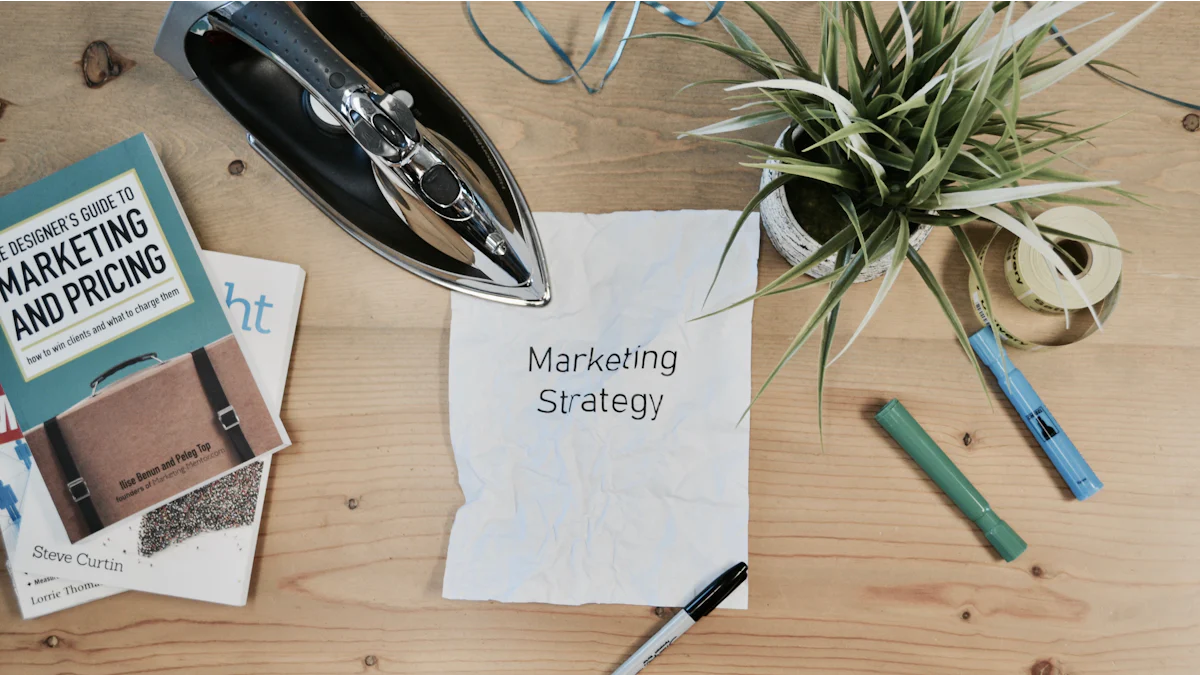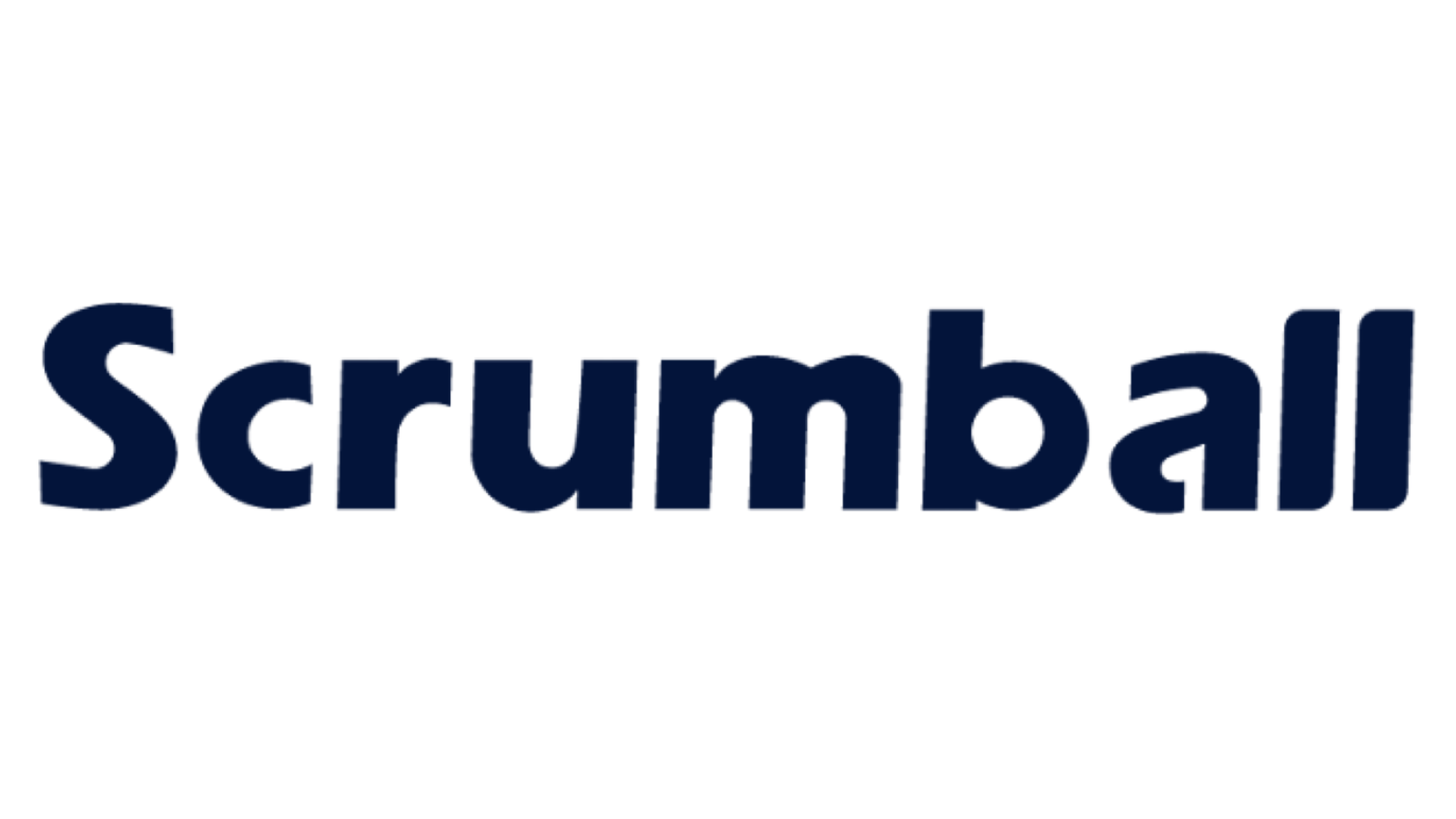10 Inspiring Examples of AI in Marketing Automation

Imagine having a marketing assistant who never sleeps, analyzes data in seconds, and delivers personalized experiences to every customer. That’s the power of marketing automation artificial intelligence. Over 55% of marketers are already using or considering AI to transform their strategies. It’s not just about saving time—it’s about creating smarter campaigns. AI tracks user behavior, predicts trends, and tailors content to boost engagement. Whether it’s automating email campaigns or optimizing ad performance, AI in marketing is reshaping how you connect with your audience.
AI-Powered Email Marketing

Personalized Email Campaigns
Dynamic content generation for individual recipients.
Imagine receiving an email that feels like it was written just for you. That’s the magic of AI marketing automation. AI tools analyze customer data to create personalized marketing messages tailored to individual preferences. For example, Airbnb uses AI to craft subject lines that resonate with users, boosting open rates by 11%. Virgin Holidays takes it a step further by using AI to optimize email content, achieving a 31% increase in click-through rates. These tools don’t just stop at personalization—they also ensure your emails stay relevant and engaging.
AI marketing automation makes it easy to insert dynamic content into emails. Whether it’s recommending products based on browsing history or sharing location-specific offers, AI ensures every email feels personal. This approach doesn’t just improve engagement; it builds stronger connections with your audience.
Predictive analytics for optimal send times.
Timing is everything in email marketing. AI-driven insights help you send emails when your audience is most likely to engage. Predictive analytics analyze historical data, such as past open rates and user behavior, to determine the best time to hit “send.” Tools like Mailchimp’s Send Time Optimization feature take the guesswork out of scheduling. By sending emails at the right moment, you can maximize open rates and reduce email fatigue. This strategy keeps your audience engaged and loyal.
Automated Drip Campaigns
AI-driven segmentation for targeted messaging.
AI marketing automation simplifies the process of segmenting your audience. It groups subscribers based on behavior, preferences, and past interactions. This ensures your automated email campaigns deliver the right message to the right people. For instance, AI can identify customers who abandoned their carts and send them a gentle nudge to complete their purchase. These personalized marketing messages drive conversions and enhance the overall customer experience.
Real-time adjustments based on user behavior.
AI-powered marketing automation doesn’t just set up campaigns—it keeps them running smoothly. By analyzing user behavior in real time, AI tools adjust your campaigns on the fly. If a subscriber stops engaging, AI can tweak the frequency or content of emails to re-capture their interest. This adaptability ensures your campaigns stay effective and relevant. Plus, it reduces unsubscribe rates, keeping your audience engaged throughout their customer journeys.
AI in digital marketing has revolutionized email strategies. From personalized content to real-time adjustments, AI marketing tools make it easier than ever to connect with your audience. With these tools, you can create automated email campaigns that feel personal, timely, and impactful.
AI in Social Media Marketing
Social Media Content Scheduling
AI tools for identifying peak engagement times.
Timing matters when it comes to social media. Posting at the right moment can make or break your engagement. AI in social media marketing takes the guesswork out of this process. Advanced tools analyze your audience's activity patterns and identify the best times to post. For example, AI-driven insights can reveal that your followers are most active on weekday evenings or during lunch breaks. This ensures your content reaches them when they're most likely to engage.
Modern AI tools go beyond just timing. They also provide smart recommendations for high-performing topics. By analyzing past posts and audience behavior, these tools suggest what type of content will resonate most. This means you can focus on creating posts that truly connect with your audience.
Automated posting across multiple platforms.
Managing multiple social media accounts can feel overwhelming. AI-powered scheduling tools simplify this process by automating posts across platforms like Facebook, Instagram, and Twitter. With just a few clicks, you can schedule weeks' worth of content. These tools even optimize your posts for each platform, ensuring they look and perform their best.
Some of the latest advancements include intelligent content generation. AI can create original text, images, and even videos based on simple prompts. This saves you time and keeps your content fresh. Plus, in-depth analytics track performance, helping you refine your strategy over time.
Sentiment Analysis
Monitoring brand mentions and customer sentiment.
Your brand's reputation is everything. AI sentiment analysis helps you keep a pulse on how people feel about your brand. It processes vast amounts of data quickly, scanning social media, reviews, and forums for mentions of your brand. This provides real-time insights into brand perception. If negative sentiment spikes, you'll know immediately and can take action to address the issue.
AI also detects subtle nuances in language, like sarcasm or complex emotions, that traditional methods might miss. For example, it might notice that customers love your product's design but consistently complain about its durability. These insights allow you to make informed decisions and improve your offerings.
Adjusting campaigns based on audience feedback.
AI in digital marketing doesn't just monitor sentiment—it helps you act on it. By analyzing trends, AI tools can spot patterns that aren't obvious to human analysts. For instance, they might reveal that your audience responds more positively to humorous content or that certain campaigns perform better on weekends.
With this information, you can adjust your campaigns in real time. If feedback suggests a particular ad isn't resonating, AI can recommend changes to improve its effectiveness. This ensures your campaigns stay relevant and impactful throughout your customer journeys.
Pro Tip: Use AI-driven sentiment analysis to proactively manage your brand's reputation. It helps you stay ahead of potential crises and maintain a positive image.
AI for Customer Segmentation
Behavioral Segmentation
Grouping customers based on browsing and purchase history.
Have you ever wondered how some brands seem to know exactly what you want? That’s the magic of AI in marketing. By analyzing browsing habits and purchase history, AI groups customers into segments that make sense. For example, it can identify shoppers who frequently buy eco-friendly products or those who prefer luxury items. This segmentation allows you to create campaigns that speak directly to each group’s interests.
AI doesn’t just stop at grouping. It uncovers micro-segments that humans might miss. These smaller groups often hold untapped potential for targeted advertising. With AI, you can deliver hyper-personalized messages that resonate deeply with your audience. This approach not only boosts engagement but also enhances customer lifetime value.
Predicting future behavior for targeted campaigns.
AI-driven insights take things a step further by predicting what your customers might do next. It analyzes patterns in their behavior to forecast future actions. For instance, it can predict when a customer is likely to churn or when they’re ready to make a big purchase. Armed with this knowledge, you can design campaigns that hit the mark.
Imagine sending a discount code to a customer right before they’re about to switch to a competitor. Or offering a personalized recommendation just as they’re considering a new purchase. AI makes these strategies possible, helping you stay one step ahead in your customer journeys.
Real-Time Audience Insights
Identifying emerging trends in customer preferences.
Keeping up with changing customer preferences can feel like chasing a moving target. AI in digital marketing simplifies this by providing real-time audience insights. It scans data from social media, surveys, and other sources to spot trends as they emerge. For example, a global retail brand used AI to monitor social media sentiment during a product launch. This allowed them to adjust their messaging on the fly, leading to higher engagement and sales.
AI tools also analyze customer behavior to identify patterns. They reveal what’s working and what’s not, so you can focus on strategies that drive results. This means you’re always in tune with your audience’s needs.
Adapting strategies to meet evolving demands.
AI doesn’t just identify trends—it helps you act on them. If a campaign isn’t performing well, AI tools suggest adjustments to improve its impact. A digital marketing agency, for instance, used AI to track campaign performance. It identified underperforming ads and recommended new variations. The result? A 25% increase in click-through rates and a 30% reduction in cost-per-acquisition.
By adapting your strategies in real time, you can stay relevant and effective. AI ensures your marketing efforts evolve alongside your audience, keeping you ahead of the competition.
Pro Tip: Use AI-driven insights to allocate resources efficiently. Focus on the most profitable customer segments to maximize your ROI.
AI in Content Marketing

Content Creation
AI tools for generating blog posts, product descriptions, and more.
Creating content can feel overwhelming, especially when you’re juggling multiple platforms. AI for content creation simplifies this process by generating high-quality material in minutes. Tools like Synthesia, Phrasee, and Digital First AI are game-changers. Synthesia helps you create videos for online courses or marketing campaigns, while Phrasee optimizes email subject lines to boost open rates. Digital First AI generates everything from blog posts to social media captions, saving you time and effort.
Take Cyber Inc., for example. They used Synthesia to double their video production speed and expand into new markets by creating content in multiple languages. This shows how AI tools can make your content creation process faster and more scalable. Whether you’re crafting product descriptions or writing blog posts, AI ensures your content stays fresh and engaging.
Ensuring content aligns with SEO best practices.
You want your content to rank high on search engines, right? AI-driven insights make this easier by aligning your content with SEO best practices. Tools like SE Ranking, Semrush, and Frase.io analyze keywords, optimize readability, and ensure your content meets search engine requirements. For instance, Frase.io helps you research, outline, and optimize your blog posts, so they perform better online.
These tools don’t just save time—they improve your content’s visibility. By using AI, you can focus on creating value for your audience while the technology handles the technical details. It’s like having an SEO expert on your team 24/7.
Content Recommendation Engines
Personalized content suggestions for website visitors.
Ever noticed how some websites seem to know exactly what you want to read or buy? That’s the magic of AI-powered content recommendation engines. These systems analyze user data—like browsing behavior and purchase history—to offer personalized suggestions. They adapt in real time, ensuring every visitor gets a tailored experience.
Here’s how it works: the engine collects data on clicks, views, and purchases. Then, it processes this information to uncover patterns and trends. Finally, it recommends content that matches individual preferences. This approach keeps your audience engaged and coming back for more.
Increasing engagement and time spent on site.
Personalized recommendations don’t just make your site more user-friendly—they also boost engagement. When visitors see content that resonates with them, they’re more likely to click, explore, and stay longer. This increases time spent on your site and builds trust with your audience.
AI in marketing takes this a step further by predicting what users might want next. For example, an e-commerce site might suggest complementary products based on a customer’s shopping habits. This not only enhances the customer journey but also drives sales and subscriptions. With AI, you can create a seamless, engaging experience that keeps your audience hooked.
Pro Tip: Use AI-driven recommendation engines to deliver consistently relevant content. It’s a surefire way to build loyalty and boost conversions.
AI in Paid Advertising
Programmatic Ad Buying
Automating ad placements for maximum ROI.
Imagine having your ads placed in front of the right audience without lifting a finger. That’s what programmatic ad buying does for you. AI automates the entire process, from selecting ad spaces to targeting specific audiences. This saves you time and ensures your budget is spent wisely.
Programmatic media buying offers detailed analytics and transparency, allowing advertisers to access real-time performance metrics such as impressions, clicks, and conversions. In contrast, traditional media buying relies on broad metrics, making ROI measurement more complex.
Here’s why programmatic ad buying stands out:
- Efficiency: It eliminates manual processes, letting you focus on strategy.
- Targeting Precision: AI uses advanced data to create campaigns that hit the mark.
- Cost-Effectiveness: Transparent pricing helps you avoid hidden fees and optimize your budget.
AI also considers factors like user behavior, demographics, and preferences to ensure your ads reach the right people. It even customizes ad creatives in real time based on browsing history or location. This level of precision makes your campaigns more impactful.
Real-time bidding based on audience data.
Real-time bidding (RTB) is another game-changer. AI analyzes audience data in milliseconds to bid on ad spaces that align with your goals. It evaluates behavioral patterns, contextual signals, and user intent to make smart decisions. This ensures your ads appear where they’ll have the most impact.
AI also prevents fraud by detecting suspicious activity, so your budget isn’t wasted. With RTB, you get high-value placements without overspending.
Ad Performance Optimization
AI tools for A/B testing ad creatives.
Testing your ads is crucial for success, and AI makes it easier than ever. A/B testing compares two versions of an ad to see which performs better. AI fine-tunes every aspect of the test, from parameters to insights.
- It enhances accuracy, ensuring optimal testing for all variants.
- It provides deeper insights into user interactions, helping you understand what works.
- It refines ad content, design, and placement to boost engagement.
This method takes the guesswork out of advertising. You’ll know exactly what changes lead to higher conversions.
Adjusting campaigns based on performance metrics.
AI doesn’t stop at testing—it keeps your campaigns running smoothly. Tools like ZonTools and AdCreative analyze performance metrics to make real-time adjustments. For example, ZonTools pauses underperforming ads, while AdCreative optimizes bids based on competition.
Google Analytics 4 is another powerful tool. It tracks user behavior and identifies trends, helping you refine your strategy. With AI-driven insights, you can adapt quickly and stay ahead in your customer journeys.
AI-enhanced advertising ensures your campaigns are always optimized. Whether it’s through testing or real-time adjustments, you’ll see better results and higher ROI.
AI in marketing has revolutionized how businesses connect with their audiences. From personalized email campaigns to real-time ad optimization, the 10 examples we explored showcase how marketing automation artificial intelligence can transform your strategies. Companies like Amazon and Salesforce have already embraced AI to deliver tailored experiences and boost engagement.
The benefits are clear. AI saves time by automating repetitive tasks and streamlining processes. It enhances personalization, helping you craft messages that truly resonate. Plus, it improves ROI by identifying high-performing campaigns and optimizing resource allocation.
Now’s the time to explore AI tools and integrate them into your marketing. With advancements in personalization and autonomous systems on the horizon, you’ll stay ahead of the curve. AI isn’t just a tool—it’s your partner in creating smarter, more impactful campaigns.
Pro Tip: Start small. Experiment with AI-powered tools like HubSpot or Adobe Marketo Engage to see how they can elevate your marketing efforts.
FAQ
What is AI in marketing, and how does it work?
AI in marketing uses artificial intelligence to analyze data, predict trends, and automate tasks. It helps you create personalized campaigns, optimize ads, and engage customers effectively. By leveraging AI, you can make smarter decisions and improve your marketing strategies.
Can small businesses benefit from AI-powered marketing tools?
Absolutely! AI tools are scalable and affordable. They help small businesses automate repetitive tasks, target the right audience, and improve ROI. Whether it’s email marketing or social media management, AI makes marketing more efficient and accessible for businesses of all sizes.
How does AI improve customer segmentation?
AI analyzes customer data like browsing history and purchase behavior. It groups customers into meaningful segments and predicts future actions. This helps you create targeted campaigns that resonate with specific audiences, boosting engagement and conversions.
Are AI marketing tools difficult to use?
Not at all! Most AI tools are user-friendly and designed for marketers without technical expertise. Platforms like HubSpot and Mailchimp offer intuitive interfaces, making it easy for you to integrate AI into your marketing efforts.
What are the main benefits of using AI in marketing?
AI saves time, enhances personalization, and improves ROI. It automates repetitive tasks, optimizes campaigns, and provides real-time insights. With AI, you can focus on strategy while the technology handles the heavy lifting.
See Also
5 Must-See Examples of Influencer Marketing Briefs
Key Influencer Marketing Statistics for Effective Strategies
15 Essential Influencer Marketing Platforms for 2024
20 Crucial Influencer Marketing Statistics Every Marketer Needs
10 Highly Effective Ambassador Marketing Campaigns to Explore
